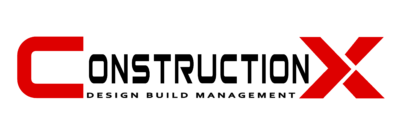Building sciences have come a long way since the days of mud-and-straw huts and log cabins. Today, we have access to advanced technologies, materials, and techniques that can help us build homes that are not only beautiful and comfortable but also sustainable, energy-efficient, and smart. In this blog, we will explore the four key categories of advanced building sciences: sustainable building, energy efficiency, building automation, and indoor air quality. We will also discuss how these categories are relevant to custom home builders, design-build firms, construction companies, and luxury home builders.
Sustainable Building: Building for the Future
Sustainable building is all about creating homes that have a minimal impact on the environment and a positive impact on the occupants’ health and well-being. Sustainable building starts with the site selection and design phase and extends to the construction and operation phase. Here are some key features of sustainable building:
- Site selection: Choose a site that is close to public transportation, shopping, schools, and other amenities to reduce the need for driving. Also, choose a site that has good solar exposure, natural ventilation, and minimal disturbance of the natural landscape.
- Design: Design the home to maximize natural light, minimize heat gain and loss, and optimize the use of space. Use passive solar design, high-performance windows, insulation, and air sealing to reduce energy consumption. Also, incorporate green features such as rainwater harvesting, graywater reuse, and native landscaping to reduce water consumption and improve the environment.
- Construction: Use durable and environmentally friendly materials such as FSC-certified wood, recycled content, and low-VOC products. Also, use construction techniques that minimize waste and maximize recycling and reuse.
- Operation: Use energy-efficient appliances, lighting, and HVAC systems to reduce energy consumption. Also, use renewable energy sources such as solar, wind, or geothermal to generate energy on-site. Finally, monitor and maintain the home’s energy and water performance to ensure it meets or exceeds the design goals.
Sustainable building is relevant to custom home builders, design-build firms, and luxury home builders who want to create homes that are not only beautiful but also sustainable and healthy. By incorporating sustainable features into their homes, they can differentiate themselves from their competitors, attract environmentally conscious clients, and contribute to a better future for all.
Energy Efficiency: Saving Money and the Environment
Energy efficiency is all about using less energy to achieve the same or better results. Energy-efficient homes are not only good for the environment but also good for the occupants’ wallets. Here are some key features of energy-efficient homes:
- Building envelope: A tight and well-insulated building envelope can reduce heat loss and gain, thus reducing the need for heating and cooling. Use high-performance windows, insulation, and air sealing to achieve a tight and well-insulated building envelope.
- Lighting: Use energy-efficient lighting such as LED bulbs and fixtures to reduce energy consumption. Also, use natural lighting as much as possible by incorporating skylights, clerestory windows, and light tubes.
- HVAC: Use energy-efficient HVAC systems such as heat pumps, geothermal systems, or high-efficiency furnaces and air conditioners to reduce energy consumption. Also, use programmable thermostats to optimize the use of heating and cooling.
- Appliances: Use energy-efficient appliances such as Energy Star-rated refrigerators, dishwashers, and washing machines to reduce energy consumption. Also, use smart appliances that can be controlled remotely or scheduled to run during off-peak hours.
- Renewable energy: Use renewable energy sources such as solar, wind, or geothermal to generate energy on-site. Also, consider purchasing green power from a utility or a third-party provider to offset any remaining energy consumption.
Energy efficiency is relevant to custom home builders, design-build firms, and construction companies who want to provide their clients with homes that are not only beautiful but also energy-efficient and cost-effective. By incorporating energy-efficient features into their homes, they can help their clients save money on energy bills, reduce their carbon footprint, and improve their quality of life.
Building Automation: The Future of Smart Homes
Building automation is all about using technology to control and optimize the home’s systems and functions. Building automation can improve the home’s energy efficiency, comfort, safety, and convenience. Here are some key features of building automation:
- Smart lighting: Use sensors, timers, and dimmers to control the lighting in the home. Also, use voice or app control to adjust the lighting remotely or automatically based on the occupants’ preferences or schedules.
- Smart HVAC: Use sensors, thermostats, and zoning to control the heating and cooling in the home. Also, use voice or app control to adjust the HVAC remotely or automatically based on the occupants’ preferences or schedules.
- Smart appliances: Use smart appliances that can be controlled remotely or scheduled to run during off-peak hours. Also, use appliances that can communicate with each other and with the home automation system to optimize their performance and energy consumption.
- Home security: Use smart locks, cameras, and alarms to monitor and secure the home. Also, use voice or app control to arm and disarm the security system remotely or automatically based on the occupants’ presence or absence.
- Entertainment: Use smart speakers, TVs, and audio systems to provide high-quality entertainment throughout the home. Also, use voice or app control to stream music, movies, or shows from the internet or local sources.
Building automation is relevant to custom home builders, design-build firms, and luxury home builders who want to provide their clients with homes that are not only beautiful but also smart and convenient. By incorporating building automation features into their homes, they can differentiate themselves from their competitors, attract tech-savvy clients, and provide a high-quality living experience.
Indoor Air Quality: Breathing Easy
Indoor air quality is all about providing a healthy and comfortable indoor environment for the occupants. Indoor air quality can affect the occupants’ health, productivity, and well-being. Here are some key features of indoor air quality:
- Ventilation: Provide adequate ventilation to remove pollutants and moisture from the indoor air. Use mechanical ventilation systems such as exhaust fans, HRVs, or ERVs to ensure proper ventilation rates.
- Filtration: Use high-efficiency air filters to remove pollutants such as dust, pollen, and mold spores from the indoor air. Also, consider using UV lights or electrostatic filters to kill or capture bacteria and viruses.
- Humidity control: Maintain the indoor relative humidity between 30% and 60% to prevent mold growth, dust mites, and other indoor pollutants. Use dehumidifiers or humidifiers as needed to achieve the desired humidity level.
- Material selection: Choose building materials that have low VOC emissions and are less likely to emit harmful pollutants such as formaldehyde, benzene, or radon. Also, consider using natural materials such as wood, stone, or clay that have a minimal impact on indoor air quality.
- Maintenance: Regularly inspect and maintain the HVAC system, air filters, and ventilation system to ensure they are functioning properly and providing adequate indoor air quality.
Indoor air quality is relevant to custom home builders, design-build firms, and luxury home builders who want to provide their clients with homes that are not only beautiful but also healthy and comfortable. By incorporating indoor air quality features into their homes, they can differentiate themselves from their competitors, attract health-conscious clients, and provide a high-quality living experience.
Conclusion: Building for the Future
Advanced building sciences offer custom home builders, design-build firms, construction companies, and luxury home builders the opportunity to create homes that are not only beautiful but also sustainable, energy-efficient, smart, and healthy. By incorporating sustainable building, energy efficiency, building automation, and indoor air quality features into their homes, they can differentiate themselves from their competitors, attract environmentally conscious and tech-savvy clients, and contribute to a better future for all. The ideal length for a blog post varies depending on the purpose, audience, and topic.

